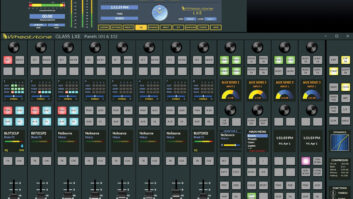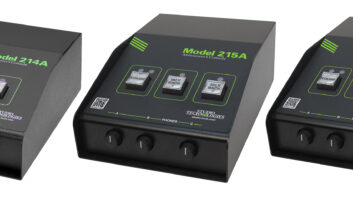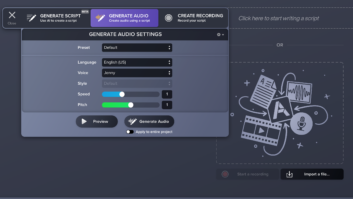
KYA(AM) Studio Engineer Carl Christiansen. Photo courtesy of Kevin Mostyn.In the radio studios of the 1950s, commercials and recorded announcements were played from 16-inch Electrical Transcriptions (E.T.s) or reel-to-reel tapes. But with the development of the fast-paced top 40 format, stations needed a better way to quickly play short audio cuts. The broadcast equipment industry responded to this need with several new product concepts.
The first of these was the Gates ST-101 Spot Tape machine. It was introduced in 1959, the same year as the first endless-loop tape cartridge machines, but never gained significant broadcaster acceptance. The Mackenzie Repeater and the Schafer Spotter were two additional formats that found limited adoption. At the same time, broadcasters were embracing the cartridge concept in overwhelming numbers, and within three years it had become radio’s gold standard.
Yet another concept that failed to click with radio broadcasters was the Ampex Cue-Matic machine, introduced in 1965. Instead of the conventional audiotape format, these machines played the Ampex Cue-Mat — a 3 millimeter magnetically-coated Mylar disk, 11-3/4 inches in diameter. It recorded analog audio in a spiral track from outside to inside, like a phonograph record. The player ran at 12 rpm, which provided a playing time of 3 minutes 45 seconds on a disk, and used a 30 Hz stop cue tone.
KYA(AM), in San Francisco (now KSFB), was the station selected by Ampex to test the prototype. KYA was close to the Ampex headquarters in Redwood City, and was a top 40 station that needed fast access to short audio cuts. Pictured is studio engineer Carl Christiensen inserting a Cue-Matic disk into one of the Ampex players. (San Francisco was a union town, and so KYA did not have combo operators.)
The Cue-Mat format had several faults. There was no jacket to protect the disks, and so they were subject to scratches, tears, folds and other damage. Another drawback was that the head speed decreased towards the center of the disk, gradually reducing audio quality. The outside speed was 7-1/2 ips, but the inside speed was only 3-1/2 ips. A third limitation was the five-second cue-up time, compared to the tape cart’s last-minute “slam-and-play” capability.
But perhaps the most significant obstacle to its success was the cost. A new Cue-Matic recorder cost $1,395 in 1966 dollars, while a player was $1,145. (Cue-Mats were 45 cents each.) That was a lot of money for all except the biggest stations. By comparison, a Collins/ATC cart recorder was $875 and a Spotmaster 500B recorder cost $695.
Ampex only manufactured the Cue-Matic machines for two years. But while not successful as a radio format, the concept later made money for Ampex in other areas. The disk patents enabled the much more successful computer floppy disk. Ampex also modified the design to use an aluminum disk with magnetic coating and created the HS-100 video disk recorder. Television broadcasters did not balk at Ampex prices, and the device found quick success in network television sports as the first stop-action instant-replay device.
John Schneider is a lifelong radio history researcher. Write him at[email protected].
For more photos and information of the Ampex Cue-Mat, visitradioworld.com/links.












